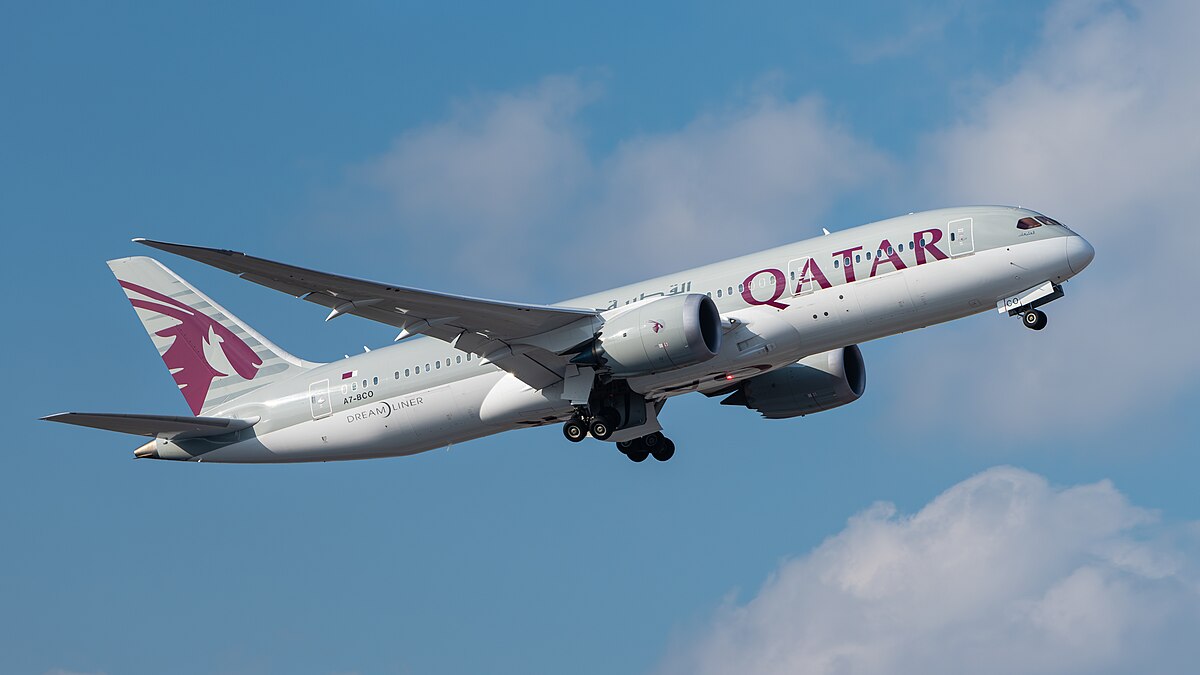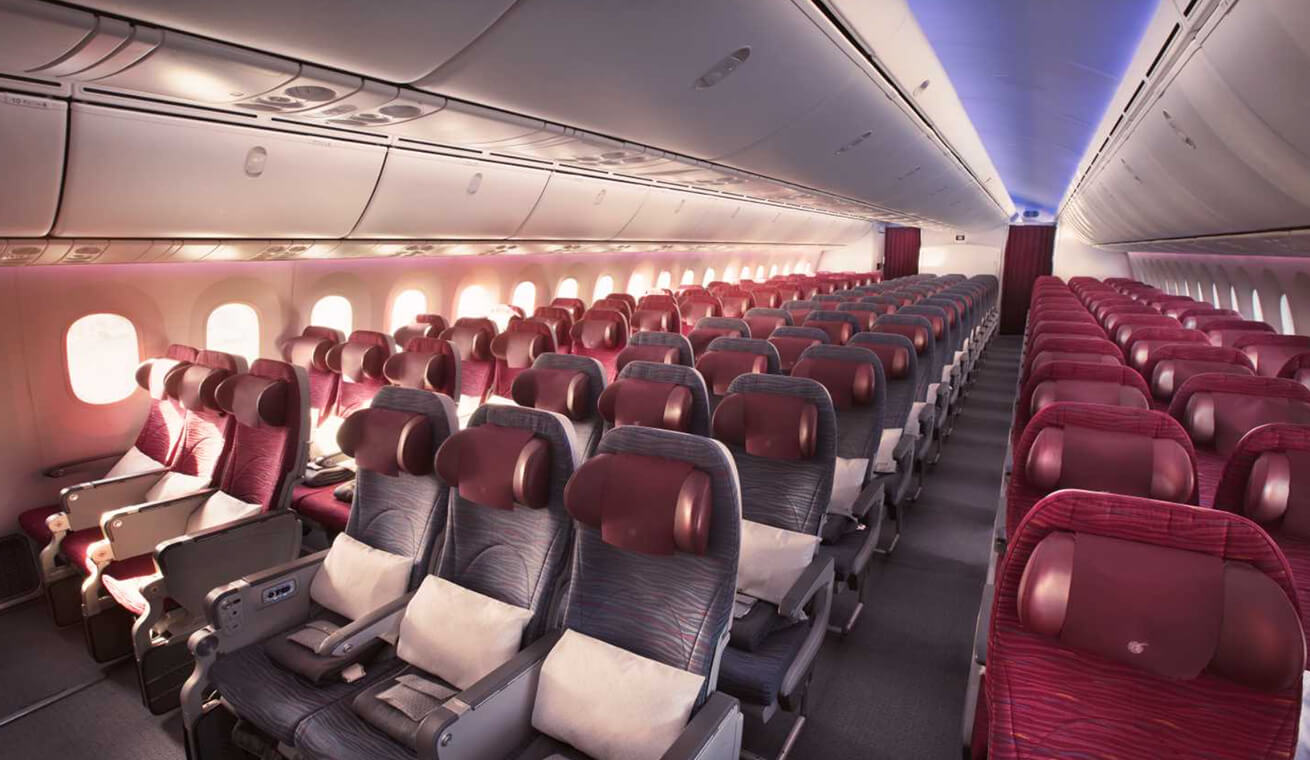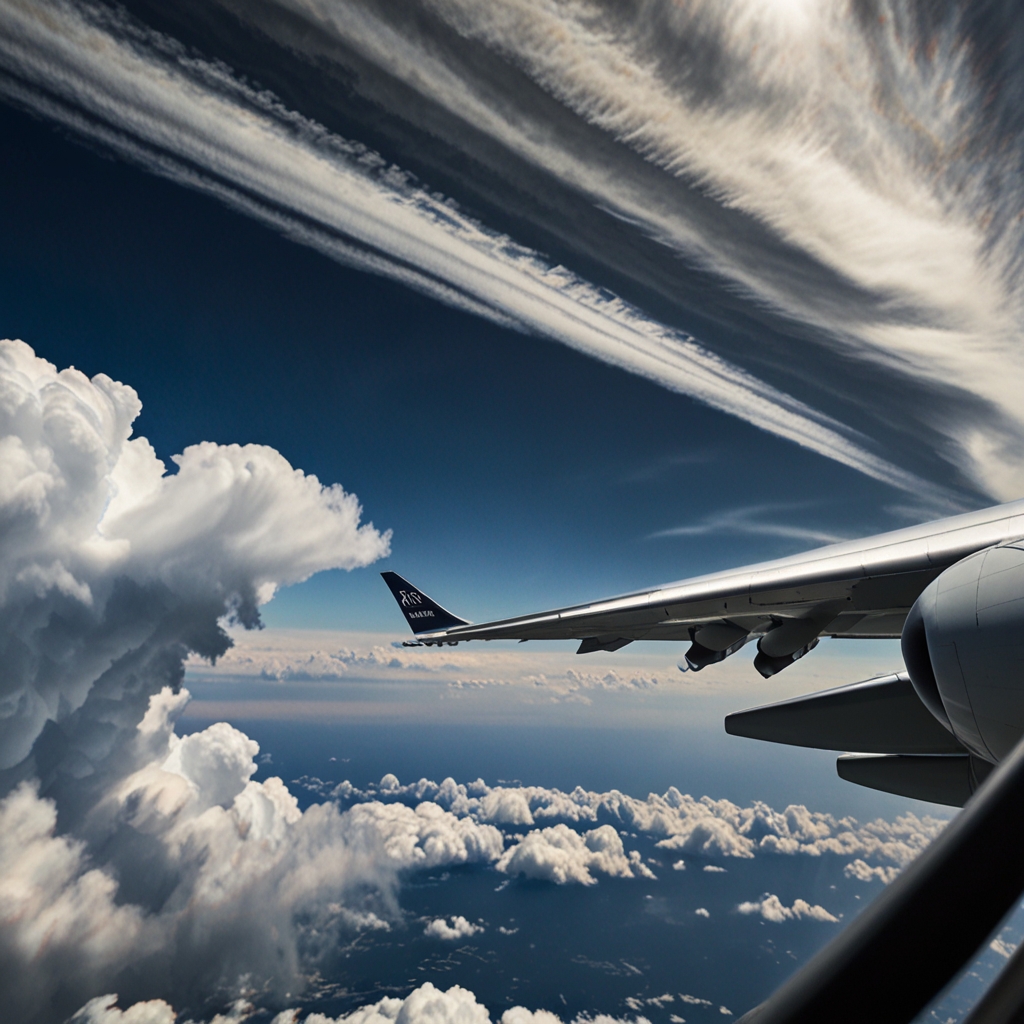
Only a few days after Clear Air Turbulence(CAT) hit Singapore Airlines flight SQ321 and killed a passenger, the same weather phenomenon has hit Qatar Airlines. The flag carrier had taken off from Qatar and was headed to Ireland. When the flight was over the skies of Turkey, the flight experienced turbulence and as a result 12 people were injured. No fatalities have been observed till now.
Details of the flight
The flight QR017, a Boeing 787 Dreamliner, operated by Qatar Airways was scheduled to land in Dublin at 1 pm. However, when the Dreamliner was over the skies of Turkey, it experienced what many people have assumed to be Clear Air Turbulence, which lasted for less than 20 seconds, as per RTE. The incident occurred during food and drinks service.

The economy class of Qatar Airways.
Here are some details of the aircraft in question:
- The flight QR017 was registered A7-BHM
Qatar operates 48 Boeing 787 Dreamliners. - The Dreamliner had joined Qatar Airways’ fleet in September 2023
- It was delivered anew to Qatar from Boeing’s Everett facility.
| Origin of the flight | Doha, Qatar |
| Final Destination | Dublin, Ireland |
| Departure Time | 7:55 am Doha time |
| Scheduled arrival | 13:30 |
Data from Flightradar24 revealed that as the Boeing 787 Dreamliner was over Turkish airspace, it plunged 275 feet at a rate of about 21,888 feet per minute (fpm). However, GPS jamming over this region might mean that the data cannot be relied upon with perfect accuracy, said the company.
The official statements from authorities
The media relations manager at Dublin Aviation Authority (DAA), the operator of Dublin Airport, Graeme McQueen, was quoted to have told Sky News:
“Qatar Airways can confirm that flight QR017 a Boeing B787-9 from Doha to Dublin has landed safely. A small number of passengers and crew sustained minor injuries in flight and are now receiving medical attention. The matter is now subject to an internal investigation.”

Dublin Airport, where QR 017 was scheduled to arrive at 13:30 but arrived half an hour earlier.
Dublin Airport released the following statement on what was formerly known as Twitter:
“Upon landing, the aircraft was met by emergency services, including airport police and our fire and rescue department, due to six passengers and six crew on board reporting injuries after the aircraft experienced turbulence while airborne over Turkey…The Dublin Airport team continues to provide full assistance on the ground to passengers and airline staff.”
Parallels with Singapore Airlines Flight 321
Singapore Airlines Flight SQ321 was affected for 10 seconds due to Clear Air Turbulence. The incident gathered so much attention that the airline was forced to change its seatbelt policies after tens of people suffered injuries on flight. This was the first fatal incident of the Singapore based carrier in almost a quarter of a century. In the flight QR017 twelve people were injured, the number of crew and passengers who suffered injuries were alike.

Atmospheric researcher Paul Williams at Reading University whom we had quoted in our analysis on Clear Air Turbulence had talked to Nature and said:
“Severe turbulence is the one that turns you into a projectile..For anyone not wearing a seatbelt it would have been a bit like being on a rollercoaster without any restraint in place — it would have been terrifying,”
as he mused about the flight SQ321. Enquired about the nature of Clear Air Turbulence and its causes the professor remarked:
“As the air blows over the mountain, the plane gets lifted up and can become turbulent..Provisionally, there was a storm nearby, but also the conditions were right for clear air turbulence — we need to do some more digging before we can say”
He also believes that the aircraft would see more turbulence in the future, and if technologies such as LiDar are placed correctly, Clear Air Turbulence could be seen twenty miles ahead. But given the cost of such a technology, it would be difficult to see them installed in aircraft in the very near future.
